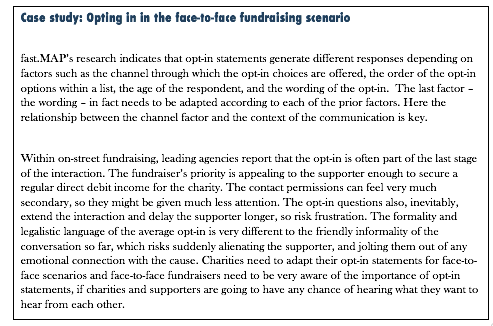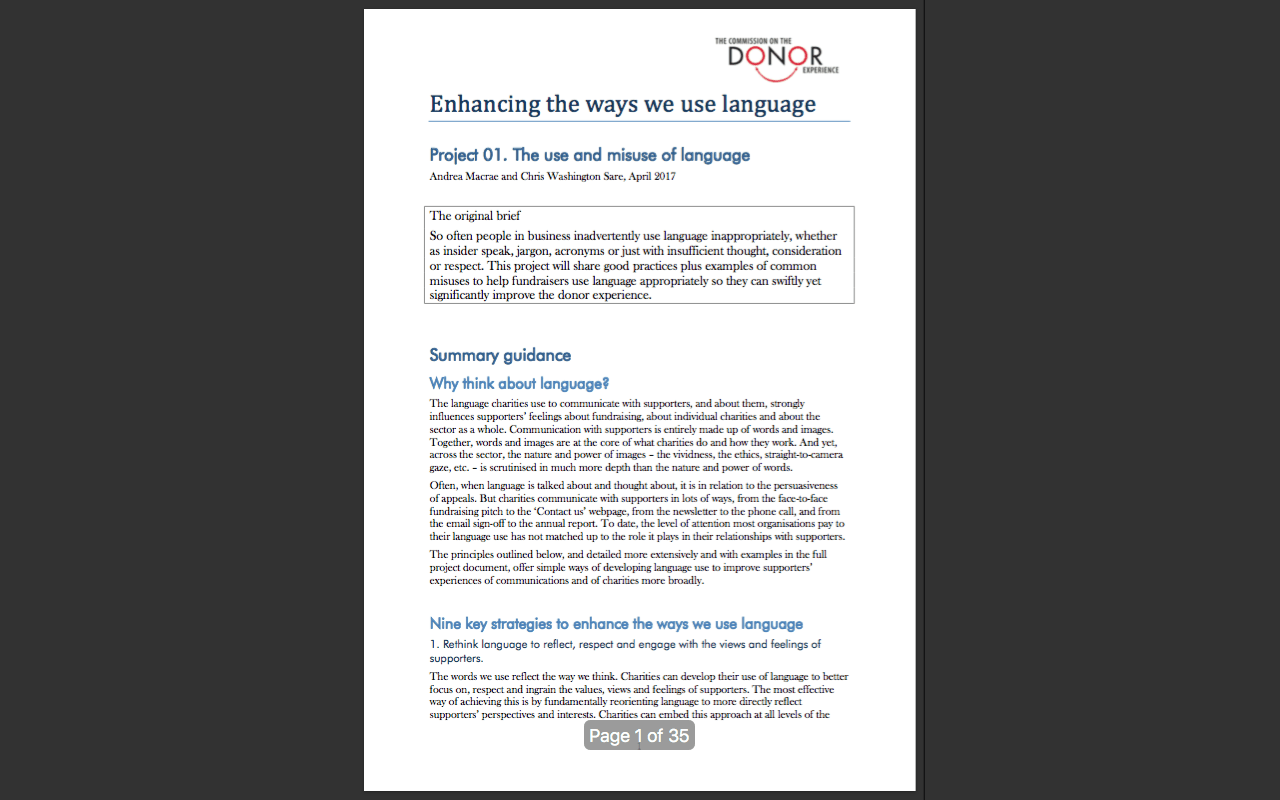CDE project 1 section 8: make contact permissions options work for supporters.
- Written by
- The Commission on the Donor Experience
- Added
- April 24, 2017
Enhancing the ways we use language
Andrea Macrae and Chris Washington Sare, April 2017
Reviewed by Matthew Sherrington
8. Make contact permissions options work for supporters.
Contact permissions statements are a contentious area. A lot of recent criticism of the charity sector is about use of personal data and supporters feeling bombarded by uninvited communications. There are ways of wording and managing contact permissions statements so that they actually serve to strengthen the supporter-charity relationship, though, and work to better meet supporters’ needs. These statements can be a really useful tool to demonstrate respect for supporters’ preferences, provide the supporter with agency over the supporter-charity relationship, and explain the charity’s wish to inform and thanks supporters, etc. The contact permissions statement is a collaborative agreement: it creates trust and sets out mutual expectations. In more ways than one, the ‘opt-in’ (or ‘opt-out’, depending on which route the charity takes), can be a linchpin of communications. Cutting edge work by fast.MAP strongly suggests that, with care, opt-in statements can work constructively for both charities and supporters. [1]
Opt-in statements about future communications often look something like this:

[1] Cole, D. (2016), A guide to creating charity permission statements, published by fast.MAP and the Institute of Fundraising.
Clarity is essential in opt-in statements, to avoid the supporter giving consent unintentionally, or meaning to give consent but accidentally not doing so (and the negative experiences that arise from both). Clarity requires plain English, simple phrasing and appropriate levels of detail. Explaining the benefits and disadvantages of each option, both for the supporter and for the charity, allows the supporter to make an informed choice in relation to the needs and preferences of both, and to feel empowered in doing so. Exactly the same principles apply to both opt-in and opt-out contact permissions statements here. The examples above are clear in the sense that they use simple language, but they lack clarity in the sense of explaining exactly what is being asked for. A charity which has developed more nuanced opt-in statements might ask questions like this:


This explains precisely what the charity would like to communicate through this specific channel, and how often, and clarifies that the supporter can opt out again later. This kind of opt-in statement is much more detailed and transparent, conveys respect for the supporter’s wishes and is much more likely to get a positive response, thereby fostering a truly consensual communicative relationship.
Click on the image below to see Project 1 summary only - PDF format



















